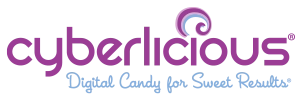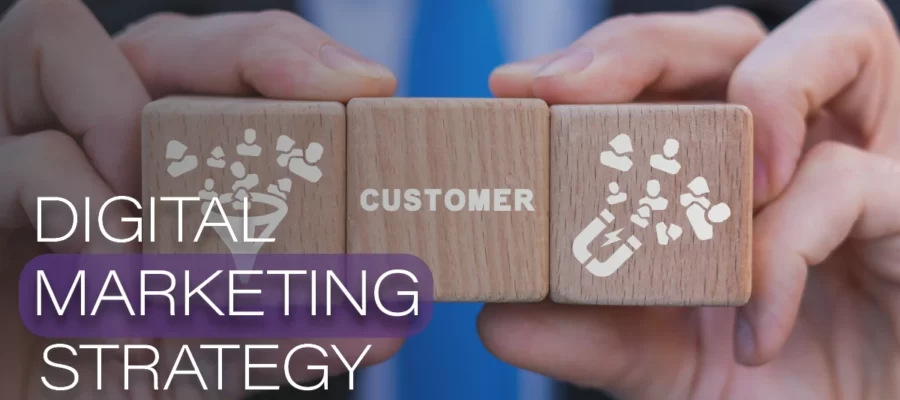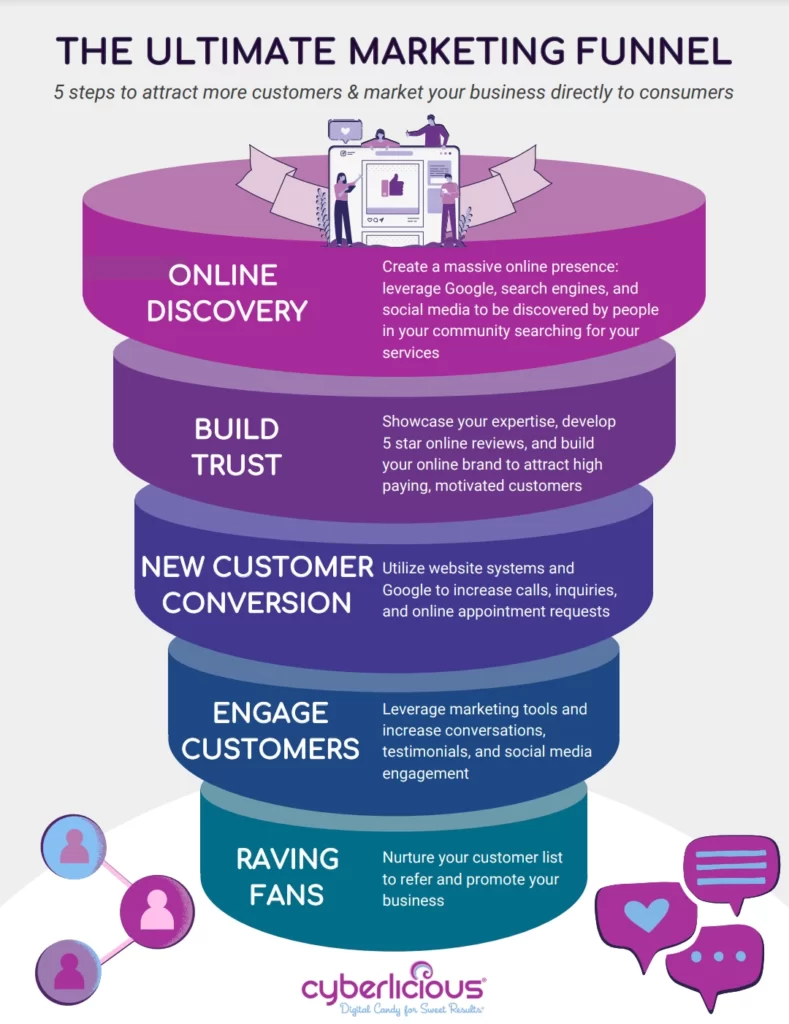Leads are individuals who may be interested in what you have to offer but are not yet ready to make a purchase. The purpose of lead generation is to find individuals that may be interested in what you have to offer and nurture them through the sales process until they are ready to make the purchase. Get tips and learn lead generation strategies that will help you grow your audience and close more leads.
Why is lead generation important?
Simply put, any business without a steady stream of potential customers will struggle to remain successful. Humans are fickle, so banking on long-term customers to always come back is not the right strategy. Businesses need to expand and reach more audience members to continuously grow their customer base. That’s where lead generation comes in.

Strategies to Generate Leads
Generating leads is a key element of any marketing strategy. To do this, multiple channels and platforms are available to direct potential customers to visit a landing page. Hopefully, there is a form for users to fill out their contact information so you can start tracking, dripping content, and working to convert them into paying customers.
Some lead generation strategies that you should consider using to be successful include:
- Content Marketing: Provide authentic and valuable content for your audience. This can include blog posts, infographics, webinars, video demonstrations, guides, and more.
- Email Marketing: Potential customers have already opted in, this is a great opportunity to drip them content and show them what they are missing.
- Social Media: Engaging with your target audience through social media can be a great way to foster relationships and grow your business. Content sharing, discussions, contests, and giveaways can all be great ways of creating interest in your brand and generating leads.
- Live Events: Events can allow you to showcase your expertise, collect contact information, and distribute lead magnets. More importantly, it can offer an environment where you can meet and quickly identify the leads more likely to make a purchase.
- Coupons/Promotions: One excellent way to encourage potential customers to give you their contact information is by providing them with a discount or free item. Even better, they may end up using the coupon and getting hooked on your product or services.
Lead Generation Cycle
We see lead generation as a continuous cycle. The goal? To turn all quality leads into paying customers. Remember, a quality lead may not always be ready to buy right away. However, stay on their radar and your chances of converting them increase.
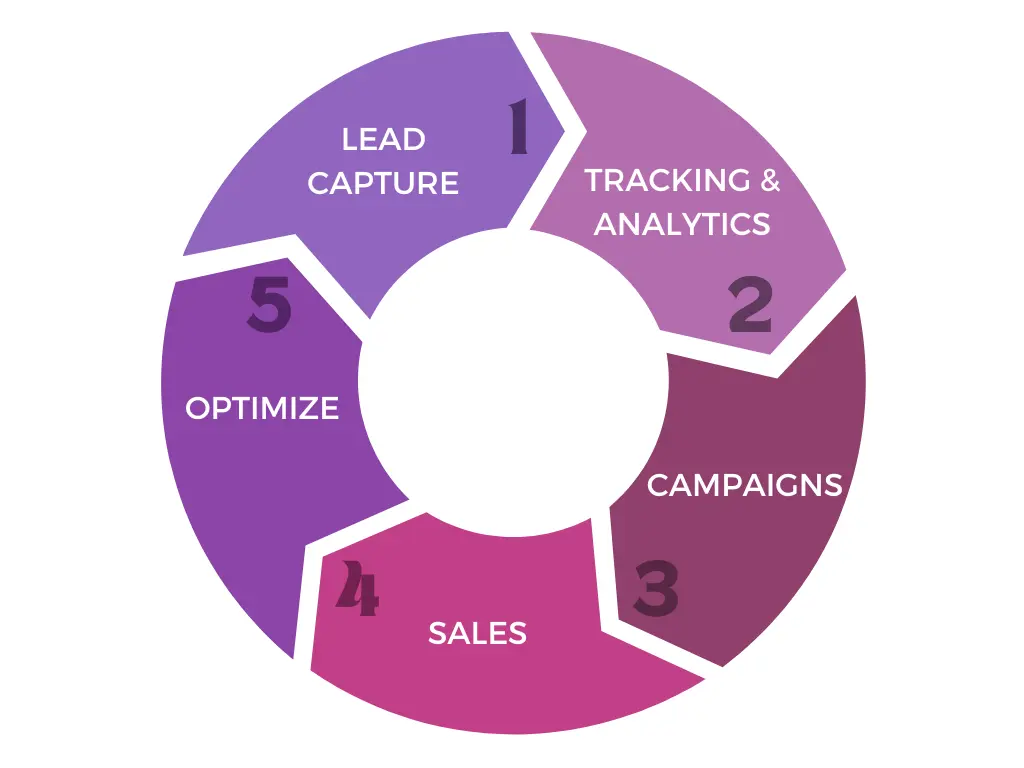
Let’s dig into our Lead Generation Strategies with a cycle where you can move leads through each stage of the funnel.
Stage 1: Lead Capture
Lead capture refers to gathering information from customers, or potential customers, who are interested in your products or services. For any business that sells products or services, capturing leads is a great way to build and expand its customer base.
By taking down information from potential customers, companies can use this data, in the future, to provide them with more details about special offers and entice them to make purchases. Additionally, businesses can drip content and show their leads why they should choose them.
▼ Information to Capture
- Phone Number
- Name
- & More Specialized Information (interest in specific service/products, etc…)
▼ Ways to Collect Information
- Website Forms (can use forms as a way to get information to unlock a free download, etc…)
- Phone Calls
- Emails
- Networking
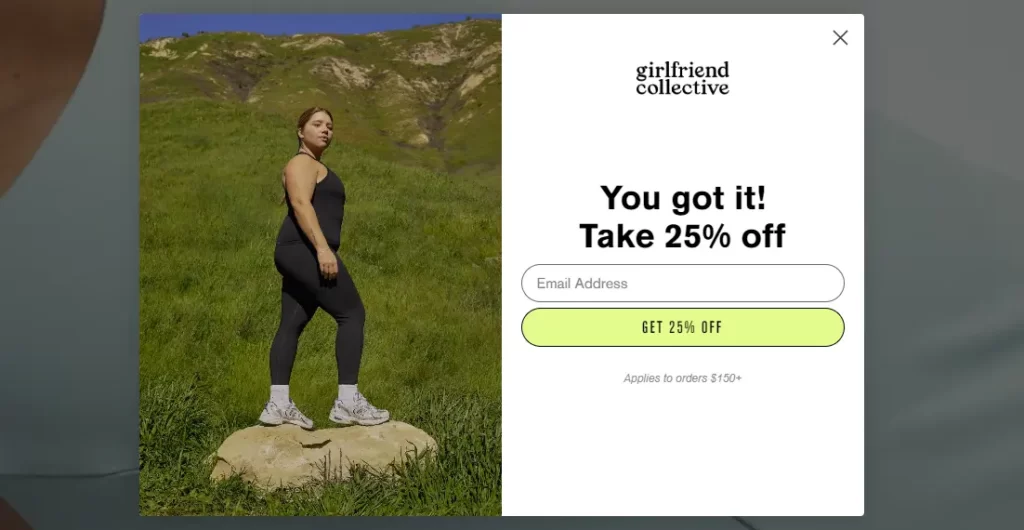
Stage 2: Tracking & Analytics
Lead tracking is an essential part of the sales process, as it records every step taken to reach out to a potential customer. This includes logging how many times a sales representative has attempted contact with them, how the interactions go, and even scoring the quality of that lead.
Tracking leads can be incredibly beneficial in the sales process, as it allows businesses to identify which prospects are most likely to convert. Companies then have the opportunity to focus their attention on individuals who are most likely to bring in revenue. Track leads through CRM Software and tagged URLs.
Additionally, analytics helps to organize customer information. For example, Google Analytics can be used to gather information about some aspects of lead generation, particularly those that happen through your website. However, there are limitations such as:
- Unable to track personally identifiable information, such as a user’s name, email, IP address or phone number.
- Unable to track offline interactions such as phone calls.
Lead tracking can provide marketers with a greater understanding of how their sales funnel functions. Furthermore, it enables them to adjust their marketing initiatives swiftly and efficiently, eliminating any strategies that do not aid in moving potential customers through that funnel without any difficulty. The information collected can be used to create audience, campaigns, content, and more.
Stage 3: Campaigns
It is essential to understand where good leads come from, and what motivated them to engage with your brand or product. Was it a paid search ad? A banner ad? Your website? Or maybe even a blog post? By tracking this information, you can adjust your marketing efforts and allocate more money toward strategies that generate the most leads.
UTM tracking codes are also useful when assessing the performance of different campaigns and content. This way, you can further refine your efforts to make them even more attractive to potential customers.
In short, when you know what works, you can build campaigns that hit your targets and bring in more leads.
Stage 4: Sales
We’ve run into this countless times, leads come in and then fall flat during the sales process. Having an effective sales process is essential for any business to successfully sell its products or services.

Utilizing a clear and effective step/process allows you to create an approach that will help close deals more efficiently. Keep it simple and keep it standard. All members of the sales process should know, and be proficient, in talking to leads in an effort to close deals. Check your sales process for weaknesses as roadblocks can appear anywhere:
- Are there any issues between lead generation and sales?
- Could marketing be out of sync with the sales team?
- Does your staff have a reliable script to handle client objections?
- Does your sales team know what information to gather and prioritize?
At the end of the day, we can make your marketing absolutely delicious, but we can’t nail down your sales process.
Stage 5: Optimize
After you have created content and run campaigns, use the data you have collected to optimize and start the process all over again. Some ways to optimize include:
- Stop underperforming ads/campaign practices.
- Test, test, test. Run A/B tests to see what works best.
- Stay dynamic and don’t be afraid to change tactics or add new practices.
Remember, audience behaviors can change. Trends come and go. Sales process/team members may fluctuate in effectiveness. You have to be willing to adapt and find new ways to generate leads and close them.
These steps should act like a circular process that keeps moving until leads convert.
Expert Strategy Means Delicious Results
Our lead generation strategy funnel may look easy at first glance, but a lot of time and effort goes into making every stage work properly. Another great way to look at lead generation is the Marketing Funnel. It shows the process of moving a customer from discovery, all the way to making them a raving fan. We have created a visual that goes over each part of the funnel, and the actions you can take to achieve your business goals.
Just click the image for your free download!
If you are ready to nail down your lead generation strategy, reach out to our Cyberlicious® experts. We get it done.
